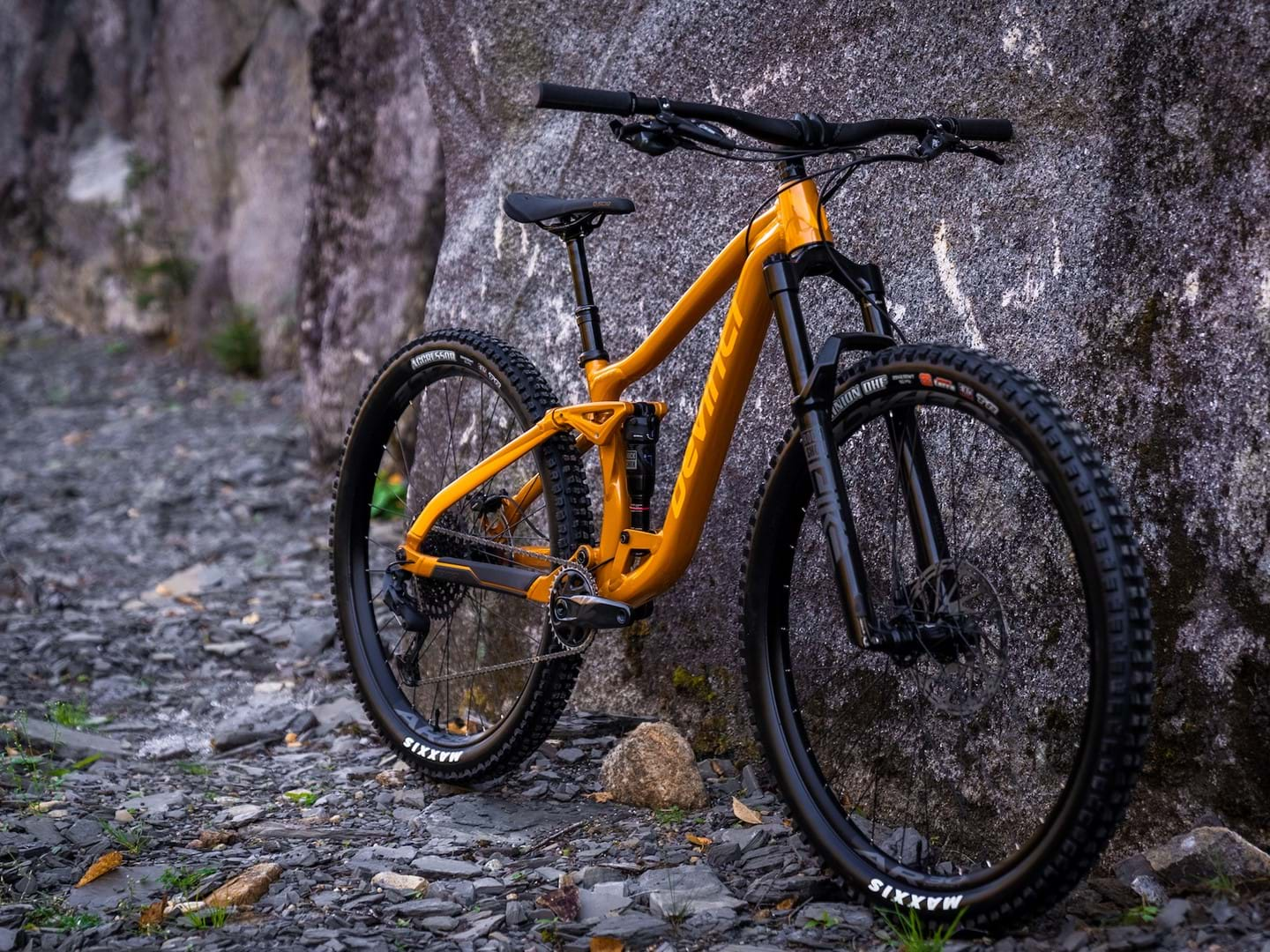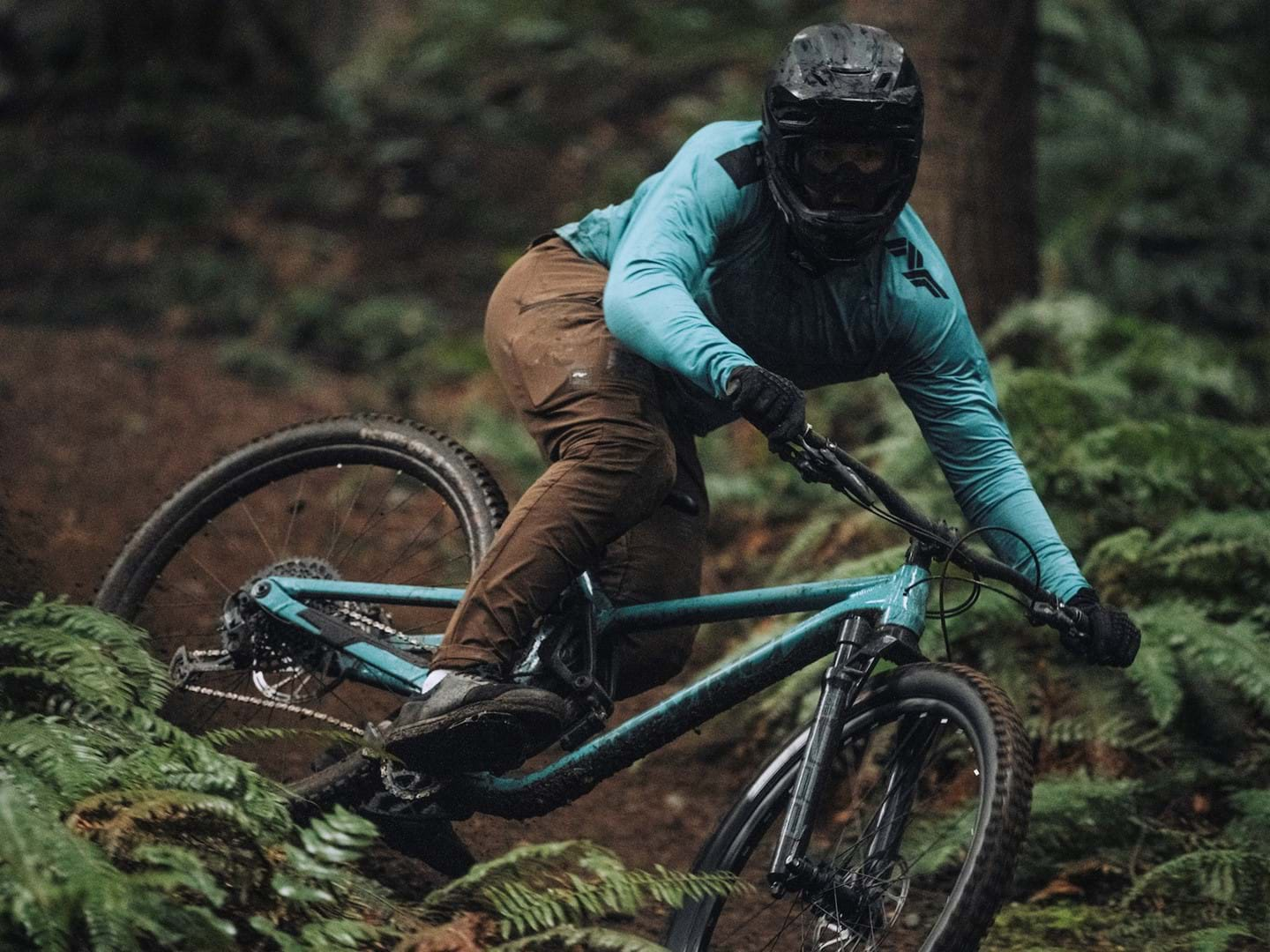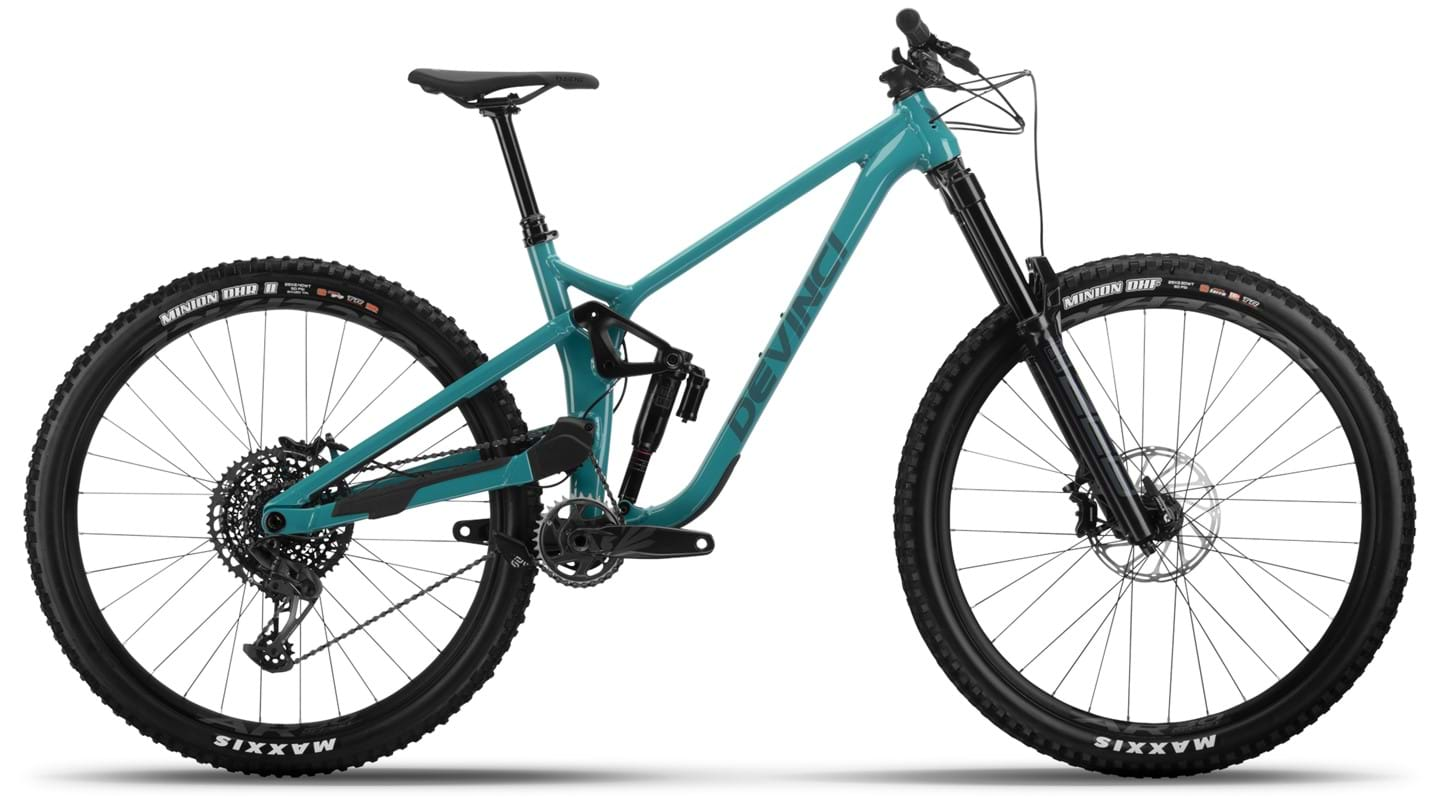Which travel is right for you?
How to Choose Your Mountain Bike
We shed light on our range of mountain bikes and the intended use of each category.
Whether you're new to mountain biking, returning after a few years off, or an experienced rider looking to switch bikes, the big question everyone eventually asks is, “How much suspension travel do I need on my mountain bike?''
To answer that question, we should first consider the advantages and benefits of a full-suspension mountain bike; these bikes :
- improve ride feel and comfort (maybe the most obvious advantage);
- absorb impacts and easily overcome obstacles;
- maintain and limit the loss of speed due to these obstacles;
- forgive rider error or inaccurate bike-handling over difficult terrain (they’ll get you out of a jam);
- provide better traction on rugged terrain.

When deciding on your suspension travel, you also need to consider the type of bike and terrain that you’ll mainly be riding. Answering the questions below will help to indicate your bike needs for this year and the years to come.
- Do you live near a bike park or a trail system with unique or technical features (ex. jumps or rocky, rugged terrain)?
- Do you plan on doing mostly shorter or longer rides? In other words, do you plan on riding all day or for one to two hours?
- Do you want to climb as much as you descend?
- Where, geographically, do you live? Are you in the big mountains, a hilly region, an area with varied terrain, or somewhere flat with little elevation?
- Who do you plan on riding with? What kind of riding do they do?
The point of these questions is to find a bike which meets your needs for most (about 80%) of the time. Remember, though, that it’s possible to use a bike outside the category for which it was designed; you want to get a bike that is appropriate for what you usually want to do.
You should also consider your mountain biking skills as well as your shortcomings. For example, are you always first to the trail summit but last to the bottom? Try a bike with more travel. In contrast, if you’re typically the last to arrive at the top, but the first to get to the bottom, you may want to try a bike with less travel, but which will be more responsive while climbing. This bike will also help you gain bike-handling skills and thus become a better rider overall.
Discover our range and the different categories of our mountain bikes, and explore the benefits of each of our platforms.
If you’re having doubts or finding it hard to make the right choice, visit one of our dealers and speak with their experts ; they have the answers to all of your biking questions!

TRAIL BIKES
MODELS : MARSHALL, DJANGO, TROY ST
In general, trail bikes feature 120-130mm of travel; trail bikes are a good compromise between cross-country bikes and enduro bikes. This means that trail bikes are super versatile and allow you to drop into a maximum number of trails with confidence. They are the ideal bike for rides where climbing is as much a part of the fun as descending.
The Troy ST, the Marshall, and the Django offer 140mm of suspension travel in the front; however, the Django provides 120mm in the rear while the Troy ST and the Marshall provide 130mm.
We also offer the Kobain, a hardtail trail bike with 130mm of front suspension travel, providing comfort and control over varied terrain.

The top reasons to choose the Troy ST, the Django or the Marshall:
- Fast and easy climbing;
- Punchy acceleration;
- Very dynamic when you have to pump the terrain;
- Lively and energetic on rolling sections;
- Better handling on the steep and technical trails than the shorter travel would suggest.
The Troy ST, the Django or the Marshall will meet your needs best if:
- You live on the east coast and mostly ride on hilly terrain.
- You live on the west coast, and you want a bike that climbs like a rocket but can also handle some rugged descents.
- You want a good marathon bike for longer races, like the BCBR.
- Your local trails aren’t steep, and you want an efficient trail bike.

ALL MOUNTAIN BIKES
MODEL : TROY
You probably already guessed from their name: the all mountain bikes are designed to tackle a bit of everything on the mountain. They usually feature about 150mm of suspension, which makes these bikes – like the trail bikes – fairly light, as well as agile and comfortable for long days in the saddle.
The Troy is Devinci’s all-mountain go-to bike; it offers either 150mm or 160mm of front suspension travel, depending on the model generation, and a rear suspension that allows up to 150mm of travel.
The Troy’s versatility makes it a great option for just about every trail network in the world.


The top reasons to choose the Troy:
- Designed for long days in the saddle, whether you’re out on a back-country adventure or riding single-track trails;
- The most versatile bike in the Devinci range of mountain bikes;
- The ideal option for big mountain terrain;
- Great climbing bike; it gives the impression of being far more capable than a 150mm bike.
- Great for smoother and faster enduro races.
The Troy will meet your needs if:
- You want more suspension travel than a trail bike. Its travel and geometry inspire confidence.
- Whether you're aiming to improve in technical sections or simply want the freedom to tackle any terrain without your bike holding you back.
- You are traveling with your bike and planning on visiting a few different areas with different kinds of trails.
- Your day in the saddle involves plenty of climbing to reach epic descents—whether it's logging roads or technical ascents, you need a bike that climbs as efficiently as possible.
- Your local trails aren’t necessarily steep, and they offer tight turns and narrow single-tracks, and you want to be able to enjoy the bike’s agility.
- You want something lighter, yet tough enough to handle serious abuse.
ENDURO BIKES
MODELS : SPARTAN, CHAINSAW
Representing the final frontier before the long-travel downhill bike, enduro bikes typically offer 150-170mm of front suspension, sometimes even 180mm.
When you’re riding an enduro bike, there’s no concern about starting down difficult trails, rough downhill sections, or jumps in the bike park. The only limit is your skills.
The Spartan features a 170 or 180mm suspension fork, and the frame allows for 160mm of rear suspension travel. The Chainsaw in its enduro configuration also features a fork of 170 or 180mm of travel depending on the build, and 170mm of rear travel.

The top reasons to choose a Spartan HP or the Chainsaw :
- Enduro riding & racing
- Bike-park riding
- Difficult & technical trails
- Efficient climbing (keeping in mind the 160mm-170mm of travel)
- Maximum forgiveness


The Spartan or the Chainsaw will meet your needs if:
- You want to ride enduro.
- You want to ride where trails are fast, long and filled with big hits and technical features.
- You want to take on anything, anywhere, anytime. You want to be able to drop into any trail and never have to worry if your bike is up for it.
- You want to improve your technique and skills with the most capable bikes from Devinci.
- You are travelling with your bike and planning on visiting a few different regions with different kinds of trails, including bike parks.
DOWNHILL BIKES
MODEL : CHAINSAW DH
Downhill-dedicated, maximum strength, big travel. In order to take on the most difficult descents, you need a bike like the Chainsaw DH – and a chairlift or a shuttle rig to get you up the mountain – equipped with a 190mm, dual-crown suspension fork.
With a downhill oriented mountain bike, there’s no doubt: the only limit to speed is the rider! The Chainsaw DH can comfortably reach speeds much higher than any of our mountain bikes. And it can also navigate across the gnarliest lines with ease and stability.
Sharpen your reflexes with the Devinci Chainsaw DH and its 170mm of rear suspension travel.
VIDEO : How Much Travel do You Need?
BIKERADAR UNDER-BIKE AND OVER-BIKE TO FIND OUT.
Want to learn more about different suspension travels and their impact on the trail? Our friends at Bikeradar put together an article and video that may not be the latest but still do a great job covering the topic!
Mountain bike and suspension lingo:
- Fork: The component that connects the front wheel to the frame, enabling steering and often incorporating suspension to absorb impacts.
- Hardtail: A mountain bike with front suspension but a rigid rear, offering a balance of efficiency, simplicity, and trail responsiveness.
- Full-Suspension: A mountain bike equipped with both front and rear suspension, designed to enhance traction, control, and comfort on rough terrain.
- Travel: The total range of motion a suspension system can compress and extend, typically measured in millimeters (mm), influencing how well a bike absorbs impacts.
- Sag: The amount a suspension compresses under the rider’s weight when in a natural riding position, usually expressed as a percentage (%), crucial for optimizing suspension performance and comfort.
- Anti-Squat: A suspension characteristic that resists compression under pedaling forces, helping with efficiency on climbs.
- Progressive Suspension: A suspension system that becomes firmer deeper into its travel, improving support on big impacts.
- Volume Spacer: A small insert in a suspension fork or shock that adjusts air spring progression, affecting bottom-out resistance and ride feel.










